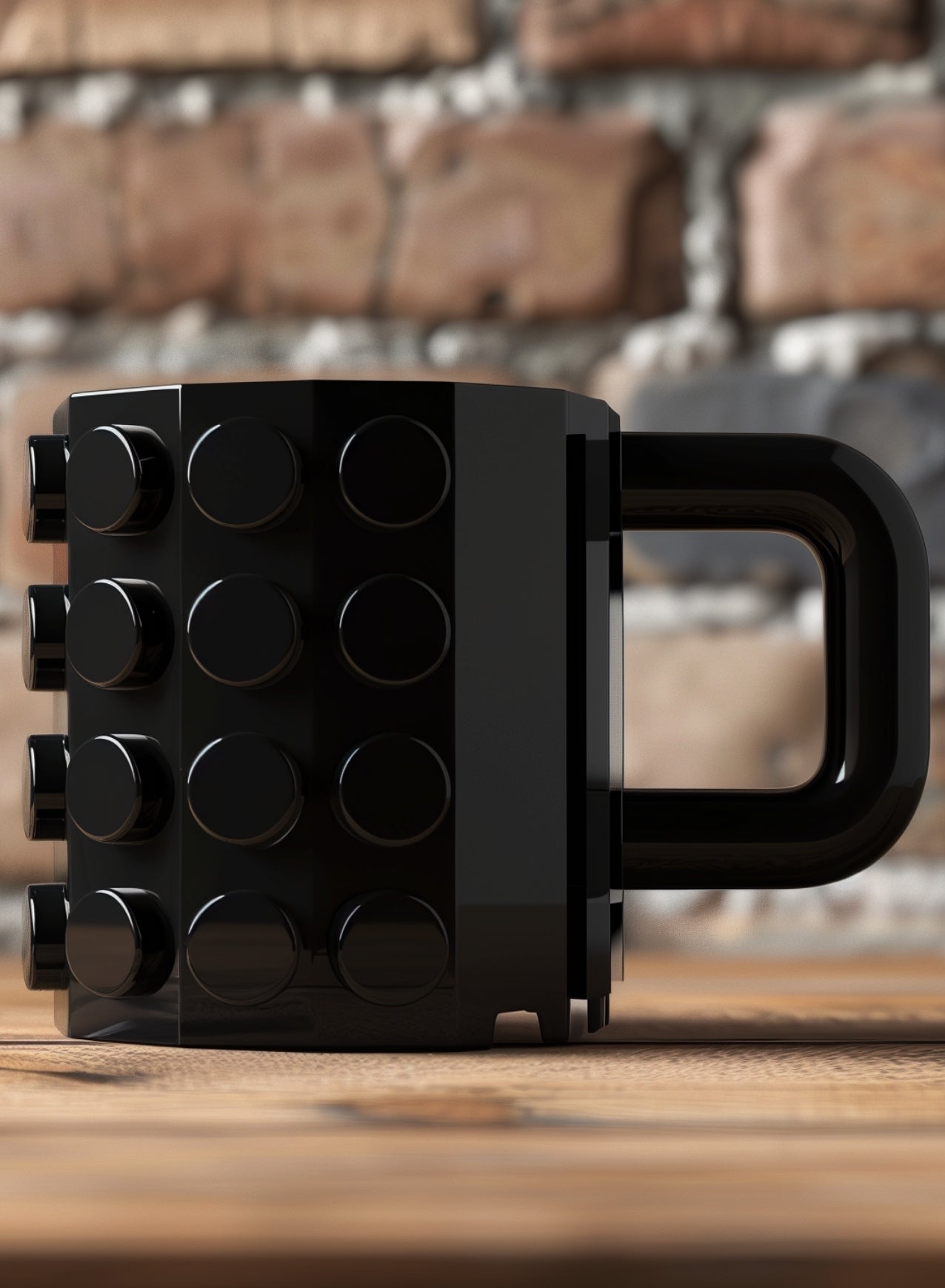Effective Ways to Remove Coffee Stains from Your Stainless Steel Coffee Mug
Table of Contents
- Introduction
- The Science Behind Coffee Stains
- Essential Cleaning Supplies
- Effective Methods for Removing Coffee Stains
- Ongoing Maintenance Tips
- Preventing Future Stains
- Conclusion and Final Thoughts
- FAQs
Introduction
Picture this: You pour a steaming cup of your favorite coffee into your trusty stainless steel mug, relishing the rich aroma that wafts through the air. But as you take a sip, you notice dark stains lurking around the rim, remnants of past brews that refuse to disappear. It’s a frustrating situation many of us have encountered, and it raises the question: how to remove coffee stains from stainless steel coffee mug?
Coffee stains on stainless steel mugs can be particularly stubborn due to the oils and tannins that coffee contains. These compounds cling to the metal, creating unsightly marks that can be difficult to clean. However, with the right techniques, we can restore our beloved mugs to their original gleam.
At Prime Mugs, we believe that enjoying your favorite beverage should be a delightful experience, and that includes serving it in a clean and presentable mug. In this post, we will explore various effective methods for removing coffee stains from stainless steel mugs, share tips for maintaining their pristine condition, and discuss the importance of using high-quality materials in our products.
By the end of this article, you will have a comprehensive understanding of how to keep your stainless steel coffee mugs looking their best, along with insights into our premium offerings that enhance your beverage experience.
What We Will Cover
- The Science Behind Coffee Stains
- Essential Cleaning Supplies
- Effective Methods for Removing Coffee Stains
- Ongoing Maintenance Tips
- Preventing Future Stains
- Conclusion and Final Thoughts
- FAQs
So, let’s dive into the world of coffee mug care and learn how we can transform those stained vessels into sparkling vessels of joy!
The Science Behind Coffee Stains
Understanding why coffee stains are so challenging to remove can help us tackle them more effectively. Coffee contains natural compounds, including oils and tannins, that can adhere to stainless steel surfaces.
- Tannins: These organic compounds are responsible for the dark stains we often see. They bind to the metal, making it difficult to scrub away without the right technique.
- Oils: Coffee’s oils can leave a greasy residue that attracts more stains over time.
- Water Minerals: Using hard water can exacerbate the staining problem, leaving a cloudy residue that dulls the shine of your stainless steel mug.
By comprehending these factors, we can choose the right cleaning methods to break down and eliminate coffee stains effectively.
Essential Cleaning Supplies
Before we delve into the cleaning methods, let’s gather our cleaning arsenal. Here are the basic supplies you will need:
- Mild Dish Soap: A gentle, non-abrasive dish soap is ideal for regular cleaning.
- Warm Water: This helps to loosen dirt and grime, making it easier to clean.
- Soft Bristle Brush or Cloth: Use a non-abrasive brush or cloth to avoid scratching the surface of your mug.
- Baking Soda: This versatile ingredient acts as a natural abrasive and odor absorber, making it perfect for tackling stubborn stains.
- White Vinegar: A natural cleaning agent that effectively removes stains and restores shine.
- Denture Cleaning Tablets: These can work wonders for tough stains and are formulated to dissolve grime.
- Dishwasher Tablets: An excellent choice for a quick clean when combined with boiling water.
- Hydrogen Peroxide: A mild bleaching agent that, when combined with baking soda, can tackle deeply set stains.
With our supplies ready, let’s explore the various methods for cleaning those pesky coffee stains!
Effective Methods for Removing Coffee Stains
Method 1: Baking Soda and Vinegar
One of the most popular and effective methods for removing coffee stains involves the dynamic duo of baking soda and vinegar. Here’s how to do it:
- Pour 1/4 cup of baking soda into the coffee-stained mug.
- Slowly add 1/2 cup of white vinegar. Expect a bubbling reaction as the two ingredients combine.
- Let it sit for 15-30 minutes. This allows the solution to penetrate and loosen the stains.
- Scrub the interior gently with a soft sponge or bottle brush.
- Rinse thoroughly with warm water and dry.
This method not only cleans but also deodorizes your mug, ensuring that you enjoy your next cup of coffee with a fresh start.
Method 2: Denture Tablets
If you have denture cleaning tablets on hand, they can be surprisingly effective for cleaning coffee stains:
- Drop 1-2 denture tablets into the stained mug.
- Fill the mug with warm water (boiling water works even better).
- Let it sit for 1-2 hours or overnight for heavy stains.
- Scrub away any remaining stains with a brush, then rinse thoroughly.
Denture tablets release oxygen when dissolved, helping to break down the stubborn coffee residue.
Method 3: Dishwasher Tablets and Boiling Water
For a quick and effective cleaning solution, dishwasher tablets can do the trick:
- Place 1 dishwasher tablet inside your mug or travel tumbler.
- Fill it with boiling water and let it sit for about 30 minutes.
- After soaking, scrub with a brush to remove any stubborn stains.
- Rinse well and dry.
This method is particularly useful for lightly stained mugs, as the heat from the boiling water aids in loosening the stains.
Method 4: Hydrogen Peroxide and Baking Soda
For those deeply ingrained coffee stains, hydrogen peroxide and baking soda may be the answer:
- Combine 1/2 cup of hydrogen peroxide with 2 tablespoons of baking soda.
- Apply the mixture to the stained areas of your mug.
- Let it sit for 15-20 minutes for tough stains.
- Scrub the interior gently, then rinse thoroughly with warm water.
This combination acts as a mild bleach while providing abrasive scrubbing power, effectively lifting stubborn stains.
Method 5: Bar Keepers Friend
If you're looking for a professional-grade solution, Bar Keepers Friend is a tried-and-true cleaner for stainless steel:
- Sprinkle Bar Keepers Friend powder onto the stained areas of the mug.
- Add a little water to form a paste.
- Use a non-abrasive sponge to scrub the paste into the stain.
- Let it sit for 10-15 minutes, then rinse and dry.
This cleaner is formulated with oxalic acid, making it especially effective for removing tough stains while being safe for regular use on stainless steel.
Ongoing Maintenance Tips
Now that we’ve covered how to remove coffee stains, let’s discuss how to maintain your stainless steel coffee mugs to keep them looking pristine.
- Clean Immediately After Use: Rinse your mug with warm water right after drinking to prevent stains from setting.
- Use Soft Water: Whenever possible, rinse with soft or distilled water to avoid mineral deposits that can cloud your mug.
- Dry Thoroughly: After cleaning, always dry your mug completely to prevent water spots and rusting.
- Regular Deep Cleaning: Even with regular use, consider giving your mugs a deep clean once a month using one of the effective methods outlined above.
By following these maintenance tips, you can extend the life of your stainless steel mugs and enjoy them for years to come.
Preventing Future Stains
Preventing stains before they occur is always better than trying to remove them later. Here are some strategies to keep your stainless steel mugs looking their best:
- Don’t Leave Coffee Sitting Too Long: The longer coffee sits in your mug, the harder it becomes to remove stains. Try to drink your coffee within a couple of hours.
- Store Your Mugs Properly: Always store your stainless steel mugs in a dry location to prevent water stains and rust from forming.
- Use Protective Coatings: Some brands offer protective coatings that can help reduce staining and make cleaning easier.
Implementing these preventative measures can help keep your mugs looking like new and enhance your overall beverage experience.
Conclusion and Final Thoughts
In summary, keeping your stainless steel coffee mug free from stains is essential for enjoying your daily beverage rituals. By understanding the science behind coffee stains and using effective cleaning methods—like baking soda and vinegar, denture tablets, or hydrogen peroxide—you can easily restore your mug’s shine.
At Prime Mugs, we’re dedicated to providing premium quality mugs designed to elevate your beverage experience. Our commitment to quality and design means that when you choose our mugs, you are investing in a product that not only looks good but also performs beautifully.
By incorporating the cleaning and maintenance tips discussed in this blog, you can ensure that your stainless steel mugs remain in excellent condition, enhancing your enjoyment of your favorite drinks.
Cheers to sparkling clean mugs and delightful sips!
FAQs
1. Can I use bleach to clean my stainless steel coffee mug? No, it’s best to avoid bleach as it can cause discoloration and damage the surface of stainless steel. Stick to gentle cleaners like dish soap, vinegar, or baking soda.
2. How often should I clean my stainless steel coffee mug? It’s advisable to clean your mug after each use. Additionally, consider a deeper clean with one of the methods discussed once a month to eliminate any built-up stains.
3. Are all stainless steel mugs dishwasher safe? Not all stainless steel mugs are dishwasher safe. Always check the manufacturer’s instructions to ensure that your mug can be safely cleaned in the dishwasher.
4. What should I avoid when cleaning my stainless steel mug? Avoid using steel wool, abrasive scrubbers, or harsh chemicals that can scratch or damage the surface of your mug.
5. Can hard water affect my stainless steel coffee mug? Yes, hard water can leave mineral deposits that make your stainless steel mug look cloudy. Rinsing with soft or distilled water can help minimize this issue.
By following these tips and employing effective cleaning methods, you can maintain the beauty and functionality of your stainless steel coffee mugs, ensuring that every sip is enjoyed in style!



